Proving their resilience, Texas ports are surmounting challenges posed by severe weather events and the COVID-19 virus to handle record levels of activity while moving forward with a host of major infrastructure advances.
Not only have Lone Star State ports, like others throughout the nation and indeed the world, had to deal with the viral pandemic, but those of East Texas were struck by Hurricane Laura in late August and again by Hurricane Delta in early October, while February’s historic winter storm has caused extensive disruptions throughout most of the state.
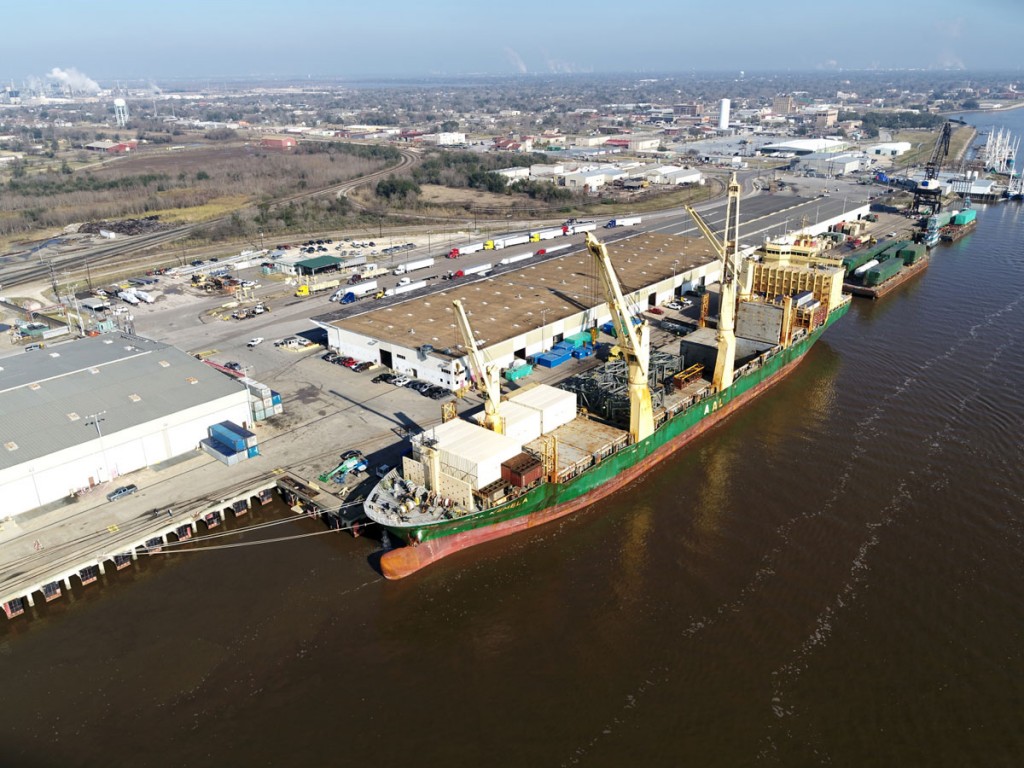
Port of Port Arthur
Despite temporary disruptions to waterway activity related to hurricanes, the Port of Port Arthur, which suffered relatively minor storm damage, has continued to handle diverse cargos while advancing berth expansion. Lengthening by 600 feet of Berth 5 is to be followed by addition of a new 1,000-foot-long Berth 6.
In 2020, the port imported enough lumber to support building of more than 13,000 homes in East Texas and neighboring Louisiana. Other cargos with strong import volumes through Port Arthur include wood pulp, used in production of tissue; wood pellets, a renewable energy biomass; and single-use medical supplies. As a designated strategic port, Port Arthur last year handled moves of more than 11,000 pieces of military equipment. And the port saw exports of more than 25 million barrels of ultra-low-sulfur diesel, while serving as home to shipyard and shrimp-processing facilities.
Port Arthur port officials note that 2020 also brought a new logo and commensurate “Where Opportunity Docks!” messaging, as well as approval of a staff-developed written policy for further advancement of engagement of local woman-, minority-, veteran- and disabled veteran-owned businesses.
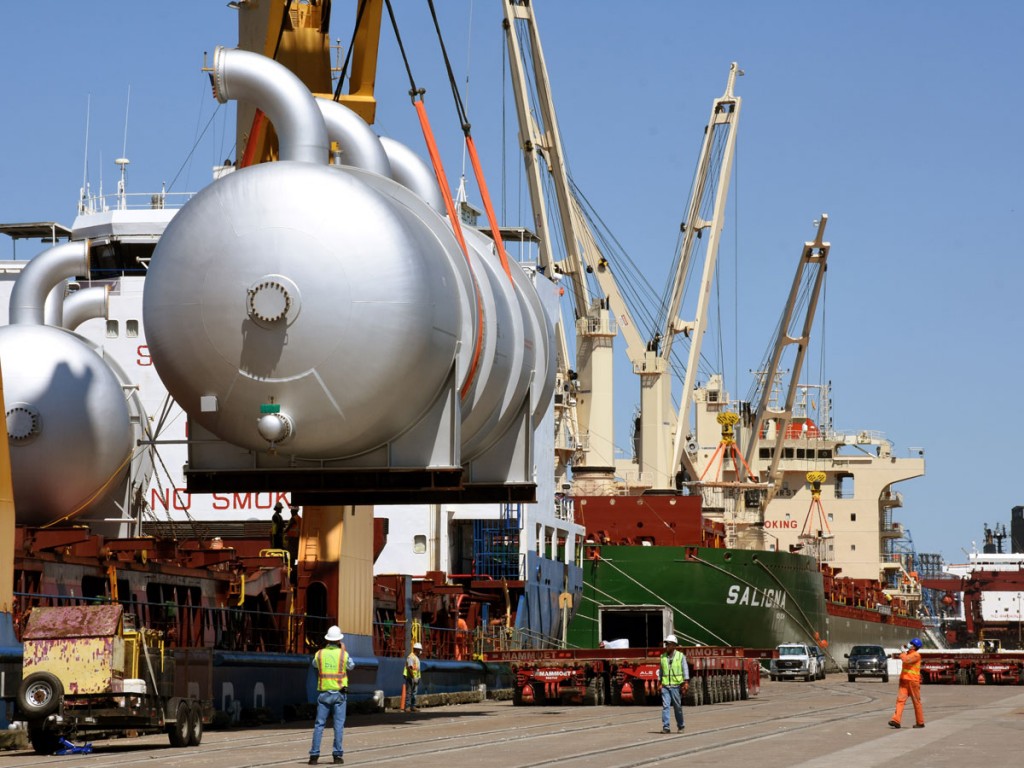
Port of Beaumont
Located 42 miles from the Gulf of Mexico via the Sabine-Neches Waterway, the Port of Beaumont is kicking off $100 million-plus in infrastructure projects in 2021, leading officials to say the port will look completely different by 2025. Endeavors to get under way over the next 18 months include reconstruction of two berths, to boost general cargo-handling capacity more than 50 percent; adding a new rail interchange track, to double interchange capability; and construction of a 30-acre laydown area. Also, several open storage lots are being improved and/or expanded.
In the fiscal year ended Aug. 31, 2020, Port of Beaumont public terminals celebrated a record year, eclipsing the 7 million ton mark for the first time. Key imports include forest products, aggregate, military and project cargos, iron and steel articles and wind energy units, while exports encompass military cargo, iron and steel, vehicles, crude oil and petroleum products, bagged goods and aggregate.
In early 2021, the U.S. Department of Transportation’s Maritime Administration announced America’s Marine Highway designation for a proposed container-on-barge service linking the Port of Beaumont with Port Houston.
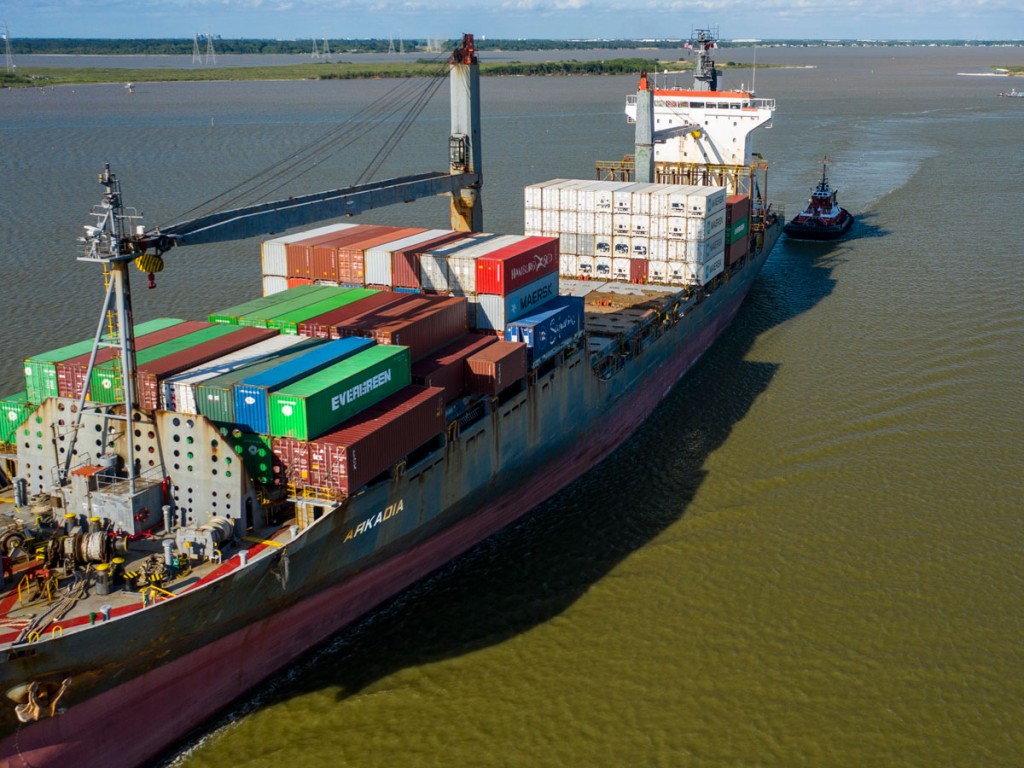
Port Houston
The nation’s No. 1 foreign waterborne tonnage port and busiest containerport along the U.S. Gulf, Port Houston is augmenting service offerings and moving ahead with infrastructure enhancements as it enjoys a solid start to 2021. In January, the port handled 255,039 twenty-foot container equivalent units, its second-highest TEU count for any January, just 5 percent less than a year earlier, as recovery from the pandemic-related downturn continues. In 2020, Port Houston handled 2.99 million TEUs, a mere 828 TEUs shy of its record 2019 mark.
A new weekly Evergreen Line service began calling Barbours Cut Container Terminal last May, providing new links with Panama’s Manzanillo and Colon, as well as Kingston, Jamaica, and Port-au-Prince, Haiti, becoming Port Houston’s 20th weekly boxship service.
On the infrastructure front, the Project 11 Houston Ship Channel improvement program gained “new start” designation in January, plus garnered $19.5 million U.S. Army Corps of Engineers 2021 work program funding, bringing anticipation of turning dirt later this year on deepening and widening. New container yards have recently become operational at both Barbours Cut and Bayport container terminals.
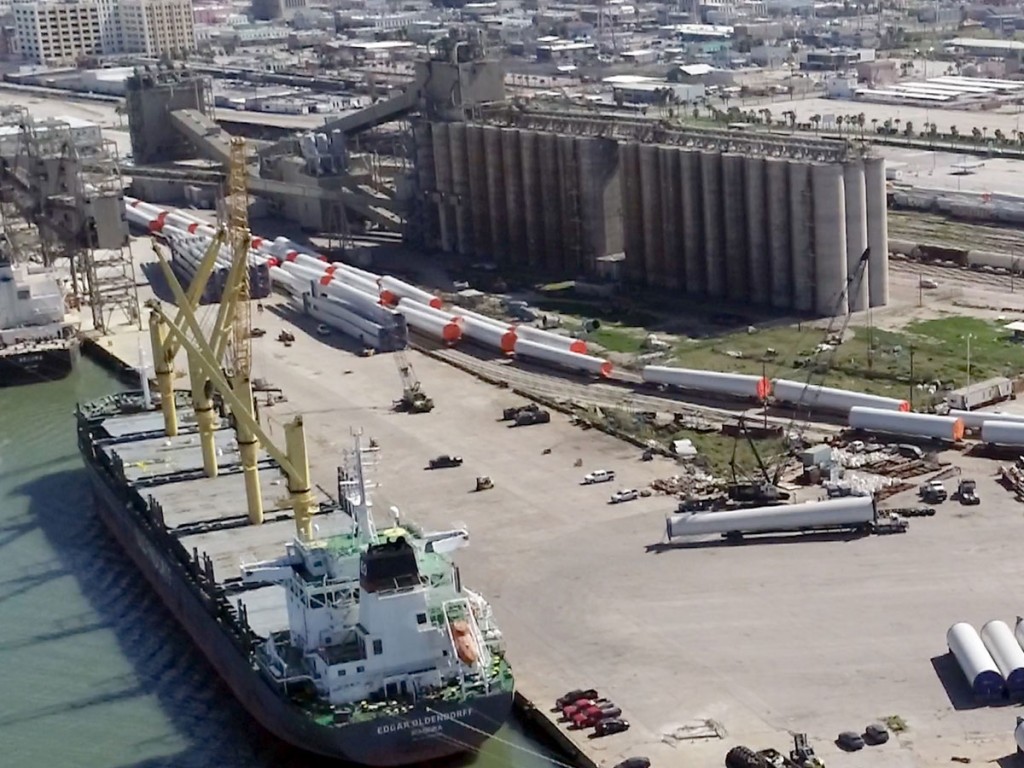
Port of Galveston
Buoyed by a 128 percent increase in grain and bean exports, the Port of Galveston, despite the pandemic, enjoyed an 8 percent increase in tonnage handled in 2020 compared with 2019, with cargo activity totaling 4.3 million tons. In December, the port moved its first U.S. cattle exports in almost a decade, following approval from the U.S. Food and Drug Administration, and anticipates more such shipments in 2021.
On the import side, Galveston Wharves brought in 2,247 wind energy components in 2020, up a bit from the preceding year. The port looks this year to open 17 additional acres of laydown area for such project cargo. Also, the Port of Galveston’s fresh fruit imports picked up slightly in 2020, with 607,000 tons of bananas and other fruit being handled.
While the Port of Galveston was the fourth-busiest U.S. cruise port in 2019, that business ground to a halt in 2020, thanks to the pandemic, but there’s some good news on that front, as Royal Caribbean International plans to commence building in April of the third cruise terminal at the port.
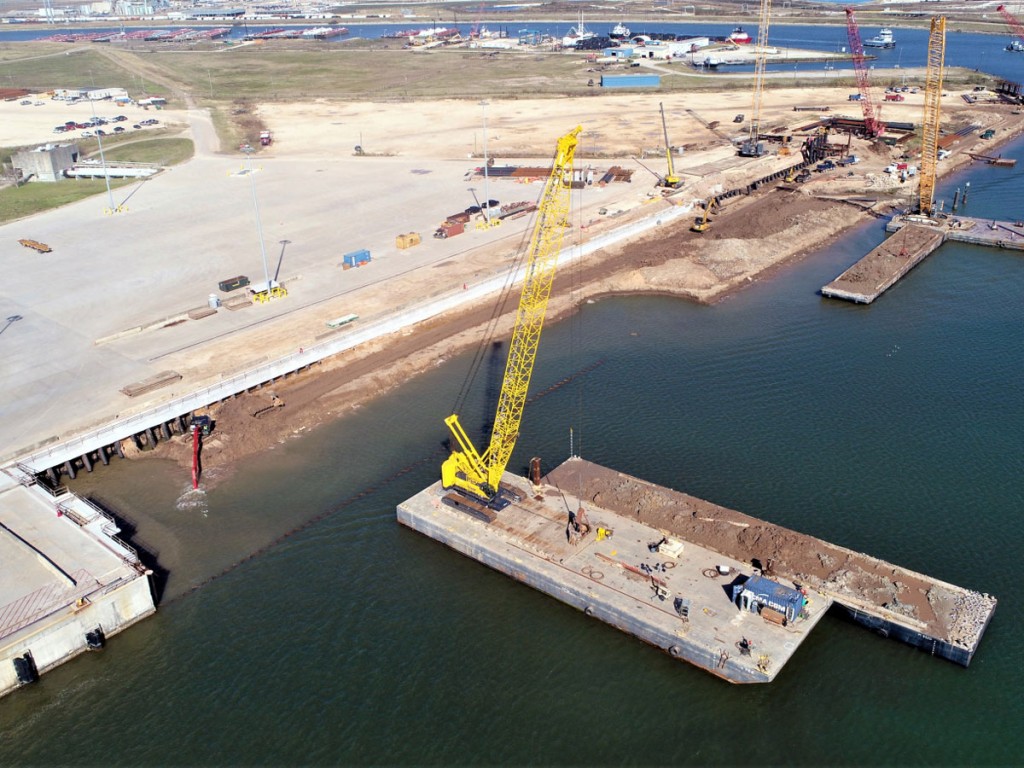
Port Freeport
The $295 million Freeport Harbor Improvement Project, which received authorization from U.S. Congress back in 2014, is now at last in the construction phase, with Great Lakes Dredge & Dock Co. embarking this month on the first $15.4 million portion of the endeavor to ultimately bring depths ranging from 51 feet to 56 feet, compared with the present 46 feet. The project has been designated a “new start” by the U.S. Army Corps of Engineers, with a total of $43.9 million in federal funding in 2020 and 2021 work plans.
Meanwhile, build-out of Berth 8 is proceeding as an integral part of the expansion of Port Freeport’s Velasco Terminal. Upon completion in 2022, the 925-foot-long berth is to be able to accommodate port-Panamax cranes, greatly enhancing the port’s containerized cargo operations. Stabilization of 6 acres of backlands supporting the terminal was completed in mid-2020.
In 2020, Port Freeport handled a record 1,136 vessel calls, up more than 10 percent from a year earlier, due largely to growth in roll-on/roll-off business and exports of liquefied petroleum gas and liquefied natural gas.
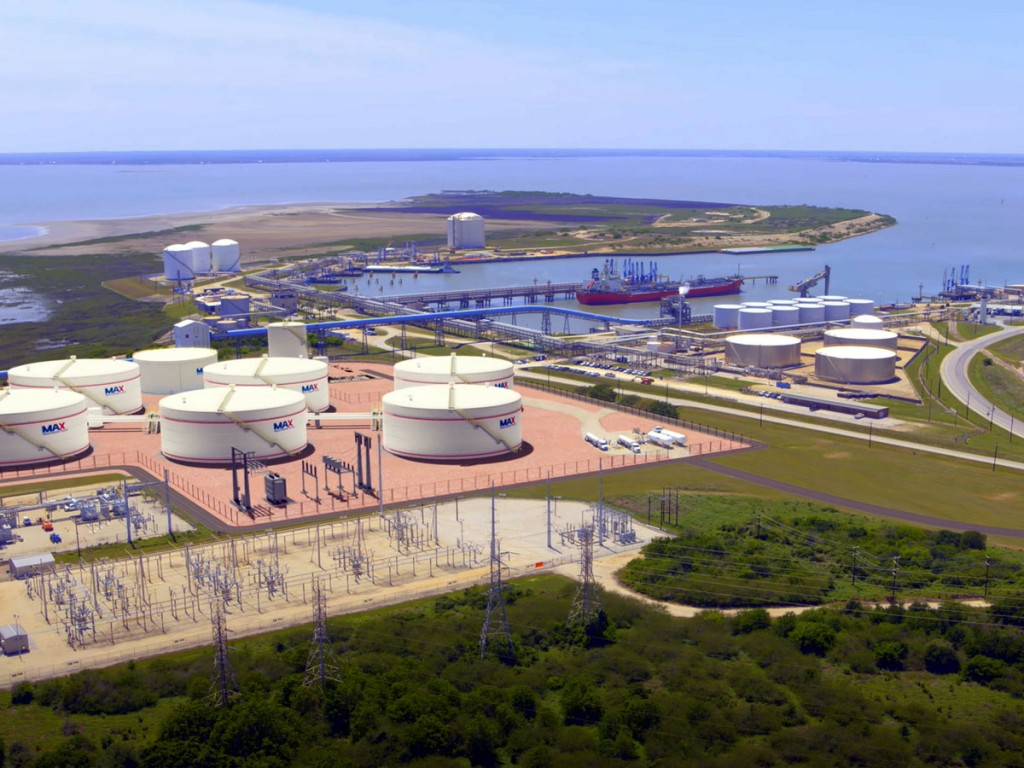
Calhoun Port Authority
Calhoun Port Authority officials are enthused about advancement of plans to facilitate Max Midstream’s exportation of big volumes of Texas crude oil via expanded Calhoun Port facilities and a deeper, wider ship channel.
December passage by Congress of the Water Resources and Development Act of 2020 has cleared the way for the undertaking to significantly widen portions of the Matagorda Ship Channel while bringing depths to as many as 47 feet compared with the present 38 feet. Once the channel project is complete in early 2023, the Max Midstream facility should be able to directly accommodate Aframax and Suezmax tanker vessels and thus handle exports of as many as 20 million barrels of crude per month.
Max Midstream, which is investing $360 million in the effort, is, in the interim, reverse lightering export crude onto the larger ships in a recently established off-port zone. Calhoun Port is being touted as a viable option to Houston and Corpus Christi for export of Permian and Eagle Ford basin crudes, including via a newly announced connection to the Phillips 66 Gray Oak Pipeline.

Port of Corpus Christi
The Port of Corpus Christi, with extensive facilities for export of crude oil and liquefied natural gas, as well as three major refineries in its region, is continuing to strive to be “America’s Energy Port,” including as a hub servicing the Mexican market that lies as near as 2 hours to its south. In calendar 2020, the port handled a record 159.7 million tons of cargo, up 31 percent from 2019.
While the separate efforts to deliver main channel depths of as many as 54 feet and a higher-clearance bridge over the Inner Harbor entrance are proceeding, the port is advancing multiple projects to enhance on-port infrastructure.
Bulk Dock 3, formerly used to handle dry bulk cargos, is being reconfigured to accommodate liquid bulk barges; a Liebherr 550 LPS rail-mounted crane has been added at Bulk Dock 1, supporting discharge of barite, pig iron, metallurgic coke, aggregate and other dry bulk commodities; and 40-plus acres of open storage capacity has been stabilized at the port’s Rincon Industrial Park, where more than 11,000 feet of new rail track have been constructed.
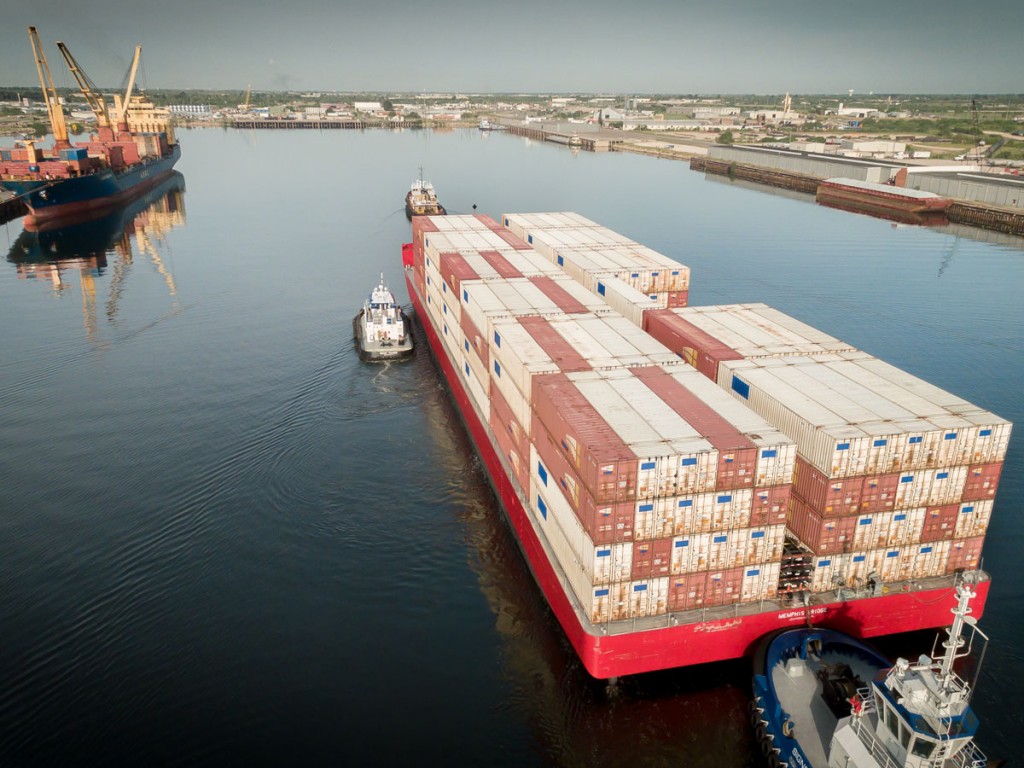
Port of Brownsville
Just north of the U.S.-Mexico border, the Port of Brownsville is looking to reclaim its status as a major exporter of agricultural products after October receipt of a $14.5 million U.S. Department of Transportation grant to improve efficiency and safety of its grain storage and loading facilities, including the 3-million-bushel capacity grain elevator operated by WestPlains LLC. After a 13-year pause in Brownsville grain exports, the port moved 175,000 metric tons of sorghum to China in 2020.
Another major 2020 development at the Port of Brownsville was initiation in December of Work Cat’s weekly container-on-barge service, providing a competitive option to trucking, with the cross-Gulf offering to Port Tampa Bay efficiently linking the Rio Grande Valley of Texas plus Mexican industrial centers with Florida and the U.S. Southeast.
At the same time, the Port of Brownsville’s rail activity is trending upward, with growing movements of steel, wind energy components, grain and petroleum-based products. The Brownsville Navigation District’s Brownsville & Rio Grande International Railway, managed by OmniTRAX Inc., handled a record 51,115 loaded railcars in 2020, up 24 percent from 2019.





